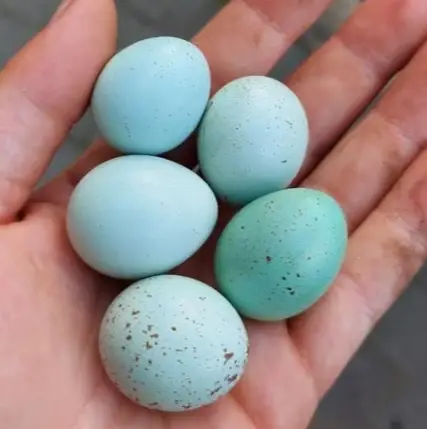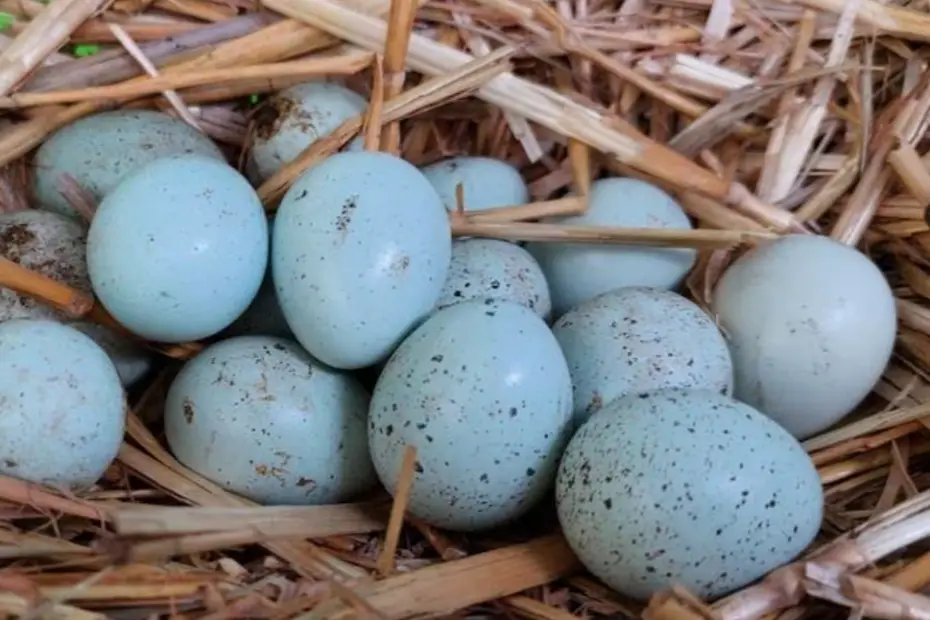Eggs are a staple food consumed in various forms around the world. While most eggs come in shades of white and brown, have you ever come across blue quail eggs? These petite, colorful wonders are not only visually striking but also offer a unique culinary experience. In this article, we will explore the allure of blue quail eggs, their distinct characteristics, health benefits, culinary applications, and more. Join us on a journey to discover nature’s fascinating creation: the blue quail egg.
You may also want to read about Bluebird eggs.
The Allure of Blue Quail Eggs
Blue quail eggs immediately catch the eye with their vibrant and distinctive color. Their striking blue shells stand out among the typical white and brown eggs we are accustomed to. This uniqueness makes blue quail eggs an intriguing choice for culinary exploration and an excellent conversation starter.
What Makes Blue Quail Eggs Unique?
Apart from their captivating appearance, blue quail eggs possess certain qualities that set them apart. The shells of these eggs have a higher density of pigments called biliverdin and protoporphyrin, resulting in their blue hue. Additionally, the shells tend to be harder and more durable compared to those of regular chicken eggs.
The Genetics Behind Blue Quail Eggs
The genetic makeup of quails determines the color of their eggs. While most quails lay eggs with brown or cream-colored shells, certain breeds, such as the Coturnix quail, carry a gene that imparts the blue shell color. This genetic variation leads to the production of blue quail eggs.
The Culinary Delights of Blue Quail Eggs
Blue quail eggs offer a delightful culinary experience. They have a flavor profile similar to regular quail eggs, characterized by a rich and creamy taste. The vibrant blue shells add a touch of visual appeal to dishes, making them ideal for decorative purposes or as a centerpiece ingredient.
Health Benefits of Blue Quail Eggs
Like other eggs, blue quail eggs are packed with essential nutrients. They are an excellent source of high-quality protein, vitamins, and minerals. Additionally, they contain beneficial compounds such as choline, which supports brain health, and antioxidants that promote overall well-being.
How to Incorporate Blue Quail Eggs into Your Diet
There are numerous ways to enjoy the unique flavors and visual appeal of blue quail eggs. They can be prepared in the same manner as regular quail eggs. Whether you prefer them soft-boiled, poached, or as part of a quiche or omelet, blue quail eggs add a touch of elegance and novelty to any dish.

Sourcing Blue Quail Eggs
Blue quail eggs may not be as readily available as regular chicken eggs. However, they can be found at specialty markets, gourmet food stores, or through online suppliers. It’s important to ensure that the eggs are sourcedfrom reputable and sustainable producers to guarantee their quality and freshness.
Caring for Quails for Blue Egg Production
If you’re fascinated by blue quail eggs and interested in having a sustainable supply, you can consider raising quails. Quails are relatively easy to care for and can be kept in small spaces. However, it’s essential to provide them with a suitable environment, a balanced diet, and proper veterinary care to ensure their health and well-being.
Blue Quail Eggs: A Conversation Starter
Blue quail eggs have a remarkable ability to spark conversations and intrigue guests. Whether used as a unique ingredient in dishes or displayed as part of an elegant table setting, these eggs are sure to capture attention and ignite curiosity. Sharing the story behind blue quail eggs can create memorable dining experiences and foster a deeper appreciation for the wonders of nature.
Conclusion
Blue quail eggs offer a fascinating twist on traditional eggs. Their vibrant blue shells, distinct characteristics, and culinary versatility make them a prized delicacy. Whether you’re a food enthusiast, a curious cook, or someone seeking a visually captivating ingredient, blue quail eggs are a delightful addition to your culinary repertoire. Explore their flavors, experiment with recipes, and embrace the magic of nature’s colorful creations.
FAQs
1. Are blue quail eggs safe to consume? Yes, blue quail eggs are safe to consume, just like regular quail eggs. However, it’s important to ensure they are sourced from reputable producers and handled and cooked properly to maintain food safety.
2. Can the blue color of quail eggs be used for decorative purposes? Absolutely! The vibrant blue shells of quail eggs make them ideal for decorative purposes. They can be used in food presentations, garnishes, or as part of an eye-catching centerpiece.
3. Do blue quail eggs taste different from regular quail eggs? Blue quail eggs have a similar taste to regular quail eggs. They are known for their rich and creamy flavor, making them a delectable addition to various dishes.
4. Can blue quail eggs be used as a substitute for chicken eggs in recipes? Yes, blue quail eggs can be used as a substitute for chicken eggs in recipes. However, due to their smaller size, you may need to adjust the quantity accordingly. One standard chicken egg is roughly equivalent to three to four quail eggs.
5. Are blue quail eggs more nutritious than regular eggs? Blue quail eggs offer similar nutritional benefits to regular eggs. They are rich in protein, vitamins, and minerals, making them a healthy addition to your diet.
